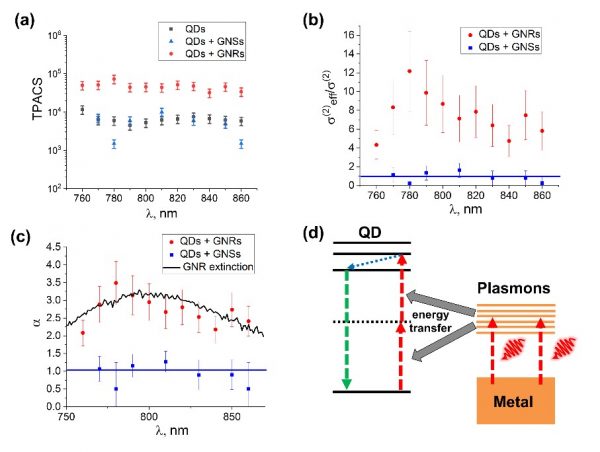Cross Determination of Exciton Coherence Length in J‑Aggregates
The coherence length of the excitons N is critical parameter governing key features of J-aggregates. Determining N is a nontrivial task since it is sensitive to the technique applied, causing many reported discrepancies. By using a combination of different experimental techniques Jumbo-Nogales et al. determined N values in a wide range of pH.
J-aggregates are self-assembled supramolecular structures constituting organic molecules, organized into quasi-1D chains. Strong in-line dipole−dipole coupling in these systems leads to the generation of the Frenkel exciton, and coherence of the exciton wave function across several interconnected monomer units rendering a narrow absorption band (redshifted with respect to monomer)-the so-called J-band. A quantitative description of long-range exciton migration involves the determination of coherence length N (or the exciton coherence length). It tells about the number of molecules of an aggregate over which the exciton wave function is coherent, the dipole momentum, oscillator strength, and the radiative lifetime of the exciton transition. The coherence length also has some implications for the nature of long-distance exciton migration and transport and for research on strong light−matter interaction.
In this paper, the authors quantify the coherence length of cyanine dye as an exemplar model J-aggregates system. The excitonic properties of organic J-aggregates were studied using several different spectroscopic techniques: absorption and transient absorption spectra, and PL spectra and PL lifetimes. This work shows that a correct and reliable determination of the exciton coherence length requires a careful and comprehensive approach. This cannot be done using single-experimental analysis at fixed experimental conditions.
By using a combination of different experimental techniques including UV−vis−NIR, fluorescence emission, time-resolved photoluminescence, and transient absorption spectroscopies, they determined N values for J-aggregates of a cyanine dye in a self-consistent way. It was found that the absorption spectroscopy alone – a widely used technique- fails in determining right value for N. The correct approach is based on the modification of photoluminescence lifetime and nonlinear response upon aggregation and careful analysis of the Stokes shift and electron−phonon coupling strength. This approach revealed that N of JC-1 J-aggregates ranges from 3 to 6.
The analysis of all the data obtained from each one of the mentioned techniques allowed to build a better picture of the aggregation process and the excitonic behavior in the monomer chains. Finally, the calculated parameters are presented to quantify these J-aggregate properties in order to strengthen their current applications and to help develop new ones.

Figure: Effect of gold nanorods on the Two-Photon Absorption Cross-Sections (TPACS) of excitons in semiconductor Quantum Dots (QDs). a) The measured TPACS of excitons in QDs in the absence of plasmon nanoparticles (black squares), QDs near gold nanospheres (blue triangles), and QDs near gold nanorods (red circles). b) The calculated change in the effective TPACS of excitons near gold nanorods (red circles) or gold nanospheres (blue squares). c) The calculated increase in the near-field intensity of plasmon modes in plasmon nanoparticles compared to the intensity of far-field (gold nanorods, red circles; gold nanospheres, blue squares); for comparison, the experimental gold nanorods extinction spectrum (black line) is also shown. d) The scheme of the plasmon–exciton interaction under external excitation.



